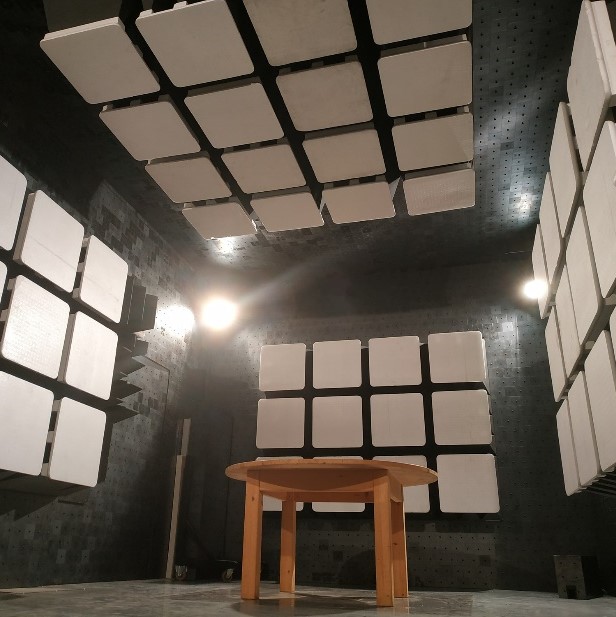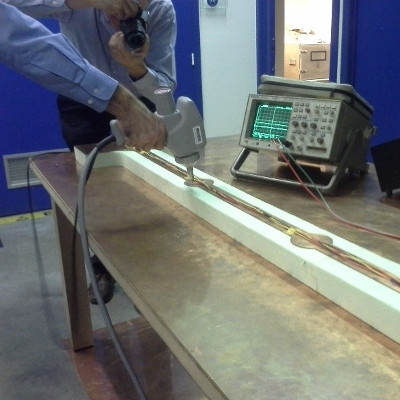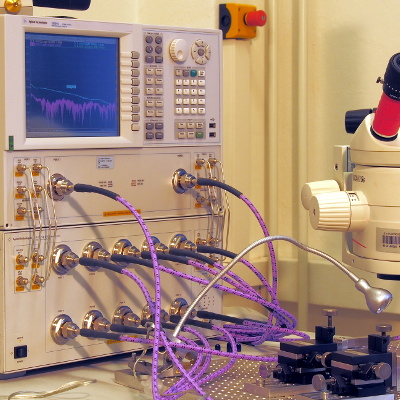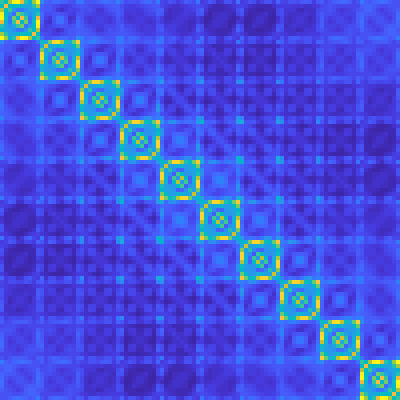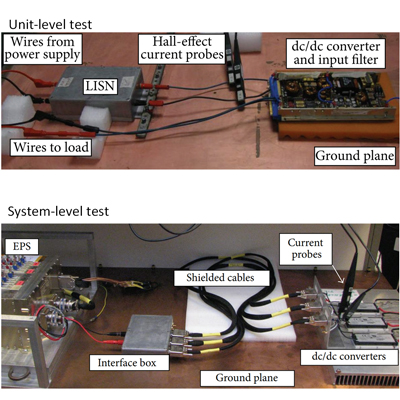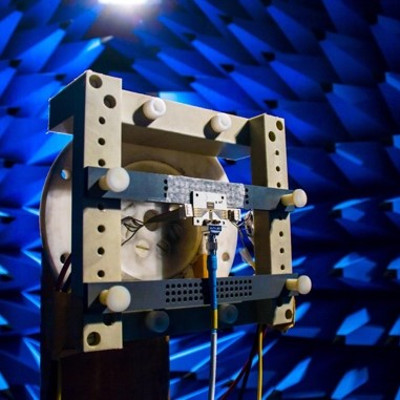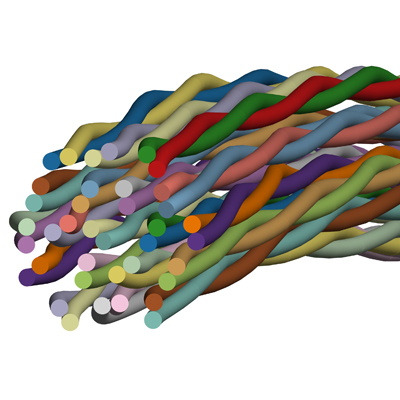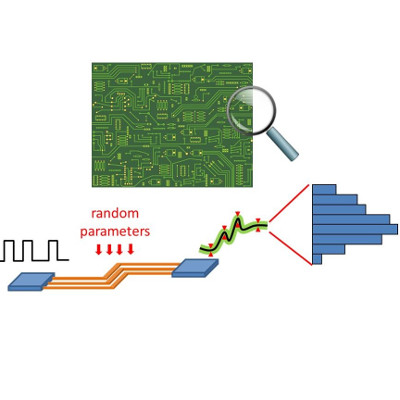Competences
Advanced Theory and Applications of Reverberation Chambers
The IETR laboratory dedicates a significant part of its research activities to reverberation chambers on both fundamental and application aspects. This includes advanced statistical analysis and development of engineering methods for reverberation chambers, including measurement of the antenna efficiency, radiation pattern, shielding efficiency, and radar cross-section. Among several original experimental tools the IETR has achieved the production of a millimeter-wave reverberating chamber with integrated dosimetric tools for isotropic exposure.
Characterization and Measurements of RF and mmWave circuits and systems
ELEC is internationally recognized in the fields of system identification and instrumentation with more than 20 years of experience in the characterization and modeling of linear and nonlinear circuits and systems, including time-varying dynamical ones. The strength of ELEC lies in the fusion of a robust foundation in theoretically rigorous identification methods, a thorough understanding of measurement processes, and a profound comprehension of machine learning techniques. This combination serves as a defense against the potential pitfalls of generalist “big data” models when applied to complex engineering applications. It is essential to avoid feeding models with vast amounts of uninformative data during their training. Achieving this goal necessitates mastery of the measurement process, design of adequate measurement conditions, and identification techniques that enable to condense massive amounts of data into large amounts of information. In all scenarios, ELEC’s substantial background expertise proves indispensable.
Fast, Physics-Based Modeling of Printed Circuit Board Links
TUHH has a unique capability in modeling and simulation of high-speed links on multilayer printed circuit boards. Based on the so called “physics-based via model”, a quasi-analytic model for vertical interconnects, complete printed circuit boards with thousands of vias and traces can be simulated in the frequency domain up to 100 GHz several orders of magnitude faster than with full-wave simulation. The resulting scattering parameters can be used for performance qualification, generation of eye diagrams, optimization of equalization, and complete link simulation.
Full-Wave Electromagnetic Modeling
UGHENT‘s Electromagnetics Group has a large expertise in full-wave modeling of antennas, printed circuit board, interposers, etc. Our in-house developed tools, based on Method of Moment (MoM), Finite Element (FE) and Finite-Difference Time-Domain (FDTD) methods, are tailored towards accurately modeling effects that are often not accurately captured by commercial solvers. For example, our novel modeling paradigms allow for very precise skin-effect and slow-wave effect simulations of interposers, 3-D IC packaging and on-chip structures.
Immunity Test Procedures for Complex Systems
In collaboration with industrial partners from the automotive and space sectors, POLIMI has developed time and cost-effective procedures for pre-compliance verification of the immunity to radiated interference of units and sub-systems. Also, we offer accurate and user-friendly circuit and electromagnetic models of injection devices for immunity verification, such as Bulk Current Injection (BCI) probes, Tubular Wave Couplers (TWC), Electromagnetic Clamps, and near-field probes.
Measurement and Modeling of Miniaturized Discrete Components for High-Speed Applications
TUHH provides accurate measurement and modeling techniques for miniaturized discrete components at GHz frequencies. Various parasitic effects related to package design, substrate properties, ground and pad layouts as well as electromagnetic simulation setups can be considered and removed by using reliable measurement and numerical de-embedding methods. Parameterized modeling and model-hardware correlation can be customized for switchable or active components with two pins. Touchstone S-parameter files and SPICE circuits can be generated according to the needs of design tools and product application range.
Modeling Approaches for EMC Risk Analysis
The IETR laboratory is a major contributor to modeling for the specific purpose of EMC risk analysis. The team combines different statistical approaches to handle uncertain and epistemic variables, involving surrogate modeling. It also introduced pioneering techniques such as the controlled stratification for the specific study of extreme events. Specific attention is also dedicated to statistical inference from sets of measurements according to EMC standards.
Modeling of Narrow- and Broadband Automotive EMC Tests
UGHENT has built up a large expertise in modeling of the various EMC test setups that are used in automotive industry. In collaboration with our industrial partners, we have focussed on the characterization of both narrowband RF tests (DPI, BCI, …) and broadband tests (ESD, transient surges, …). Our models expedite the design of novel devices (IC, modules, …), as their EMC-behaviour can be simulated early in the design phase and within the comfort of the traditional (circuit) design environment.
Multiport Characterization of Components and Interconnects up to 50 GHz
TUHH offers frequency domain characterization of components and interconnects using state-of-the-art multiport vector network analysis up to 12 ports and 50 GHz. Transmission, reflection, and crosstalk of differential interconnects can easily be measured without compromises concerning connectivity. Frequencies up to 110 GHz can be measured for two ports. By combining advanced calibration techniques with microwave microprobes highly accurate measurements of the device under test can be obtained, the results of which can be used directly for performance qualification or after postprocessing for system simulation.
Passive Macromodeling
POLITO is a well recognized worldwide leader in the development of macromodeling tools and algorithms. Such methods provide compact and low-complexity dynamical models that accurately reproduce the response of complex devices, structures and systems. Macromodels are typically computed from tabulated S-parameters and can be synthesized as SPICE or behavioral netlists, thus enabling fast and accurate Signal and Power Integrity analyses. POLITO can provide also multivariate (parameterized) macromodels for what-if, sensitivity, design centering and optimization.
Power Electronics EMC and Filter Design
POLIMI has gained a great deal of experience in prediction techniques and mitigation strategies for conducted emissions due to power electronic converters. In collaboration with our industrial partners, we have developed modeling tools for EMI prediction in automotive powertrains and satellite power distribution networks, and we are actively involved in the development of modeling strategies and test setups for optimal design of passive and active EMI filters.
RF and mmWave Testing Environment
UGHENT’s Electromagnetics Group is offering a measurement environment for antennas, wireless communication/localizations systems and EMI/EMC testing. Automated full 3-D radiation pattern measurements of passive, active and opto-electrical antenna systems are possible from 750 MHz up to 170 GHz. In addition, we are fully equipped to carry out system-oriented over-the-air measurements of fully-integrated wireless communication and localization systems. In-depth link and channel characterization and EMI/EMC assessment of next-generation systems also belong to our expertise.
Simulation of Electromagnetic Interferences Using a General Method of Moments Code
TUHH has developed a proprietary 3D fullwave solver based on the method of moments (MoM) for simulation of EMI/EMC problems in frequency domain (CONCEPT-II). The code is free of charge for academic users and comes with a graphical user interface and open access for scripting. While being especially efficienct for open, mostly metallic structures in principle all kinds of problems can be analyzed (antennas, cables, printed circuit boards, casings, coils etc.). By using our prorietary circuit simulation tool (CONCIRC) arbitrary linear loads can be connected to the MoM model for e.g. optimization of power transfer.
Simulation Tools for Interference Prediction in Complex Wiring Harnesses
POLIMI has gained a large experience in advanced modeling and simulation tools for predicting EM interference in complex wiring harnesses. The group expertise covers all modelling steps, encompassing: optimized procedures for the generation of physically-based geometries of complex bundles, development of computationally-efficient methods for accurate prediction of interference, statistical analysis and experimental verification of the obtained results.
Stochastic and Epistemic Modeling for EMC/SI/PI
POLITO, POLIMI and UGHENT have been pioneering stochastic and epistemic modeling methods for EMC/SI/PI during the past decade. Our novel techniques include polynomial chaos based approaches for interconnects, passive and active circuits, and hybrid electromagnetic/circuit modeling. Additionally, machine learning based epistemic modeling of EMC setups and perturbation techniques tailored towards uniform and nonuniform transmission lines and cable structures are within our portfolio.









